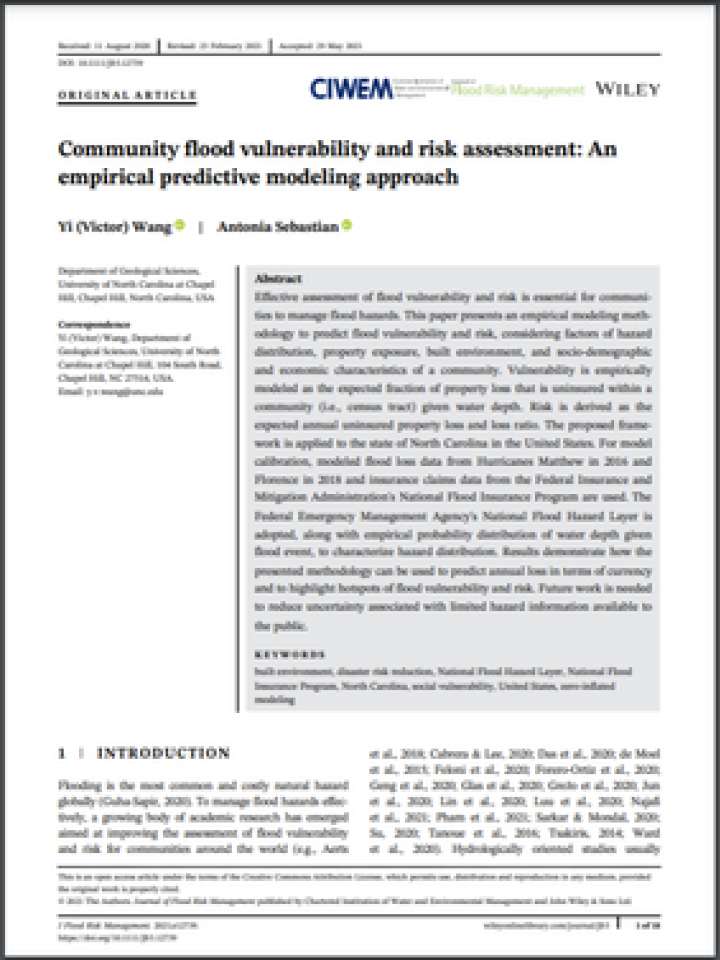Community flood vulnerability and risk assessment: An empirical predictive modeling approach
This paper presents an empirical modeling methodology to predict flood vulnerability and risk, considering factors of hazard distribution, property exposure, built environment, and socio-demographic and economic characteristics of a community. Effective assessment of flood vulnerability and risk is essential for communities to manage flood hazards. Vulnerability is empirically modeled as the expected fraction of property loss that is uninsured within a community (i.e., census tract) given water depth. Risk is derived as the expected annual uninsured property loss and loss ratio.
The proposed framework is applied to the state of North Carolina in the United States. For model calibration, modeled flood loss data from Hurricanes Matthew in 2016 and Florence in 2018 and insurance claims data from the Federal Insurance and Mitigation Administration's National Flood Insurance Program are used. Results demonstrate how the presented methodology can be used to predict annual loss in terms of currency and to highlight hotspots of flood vulnerability and risk. Future work is needed to reduce uncertainty associated with limited hazard information available to the public.
Explore further
